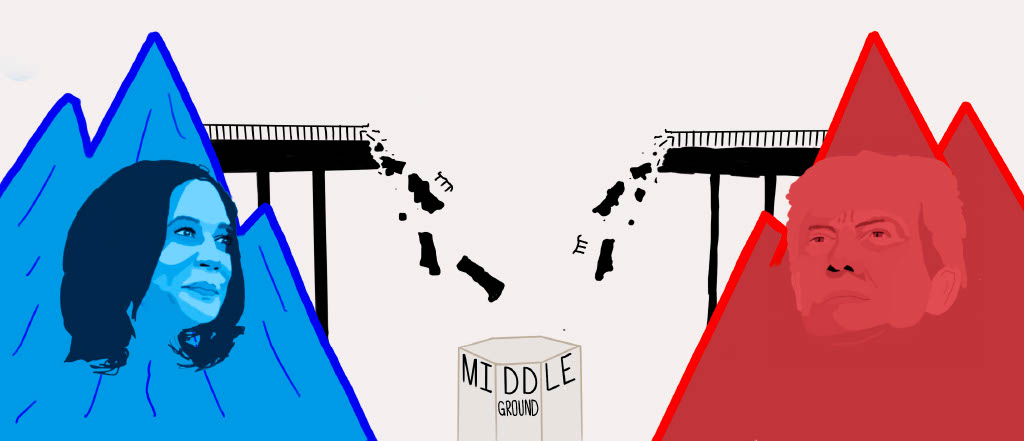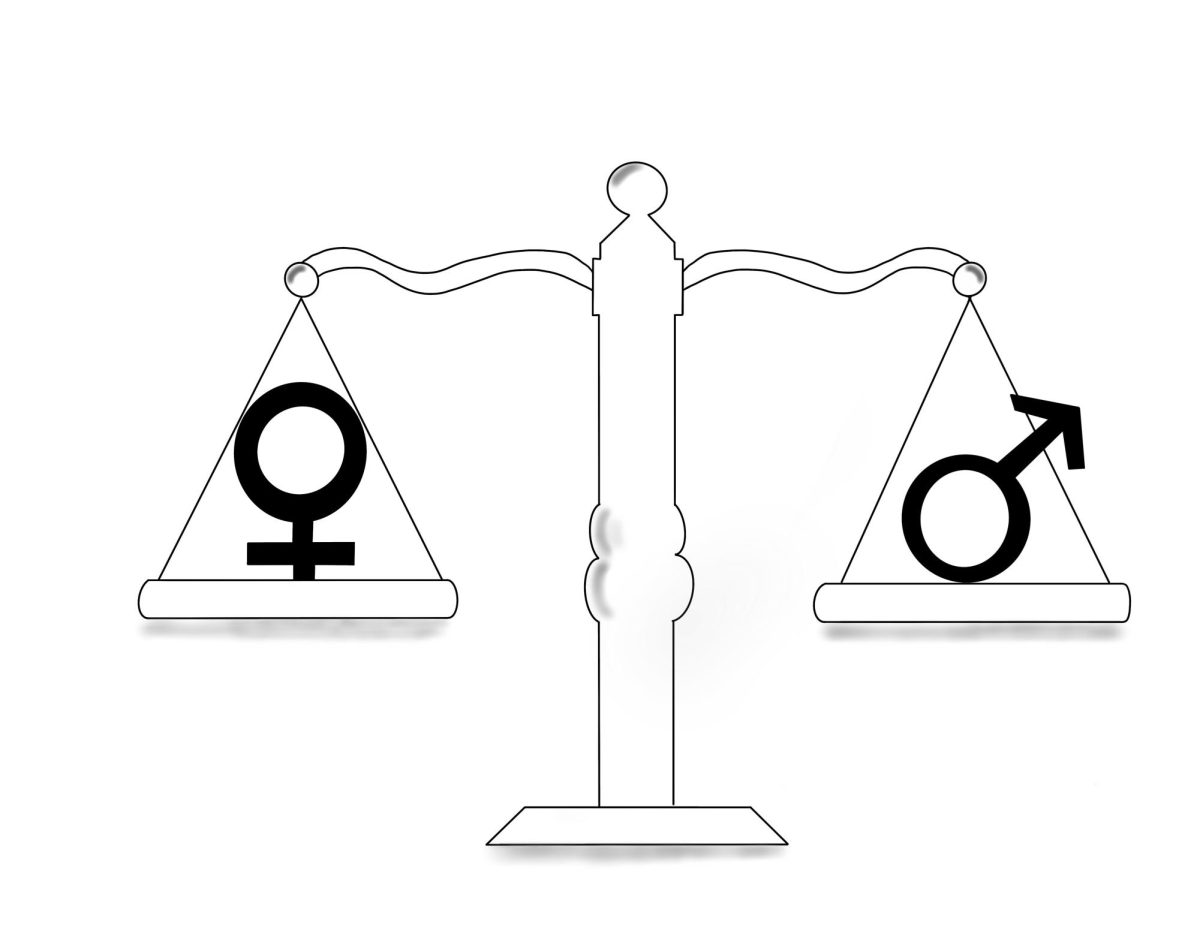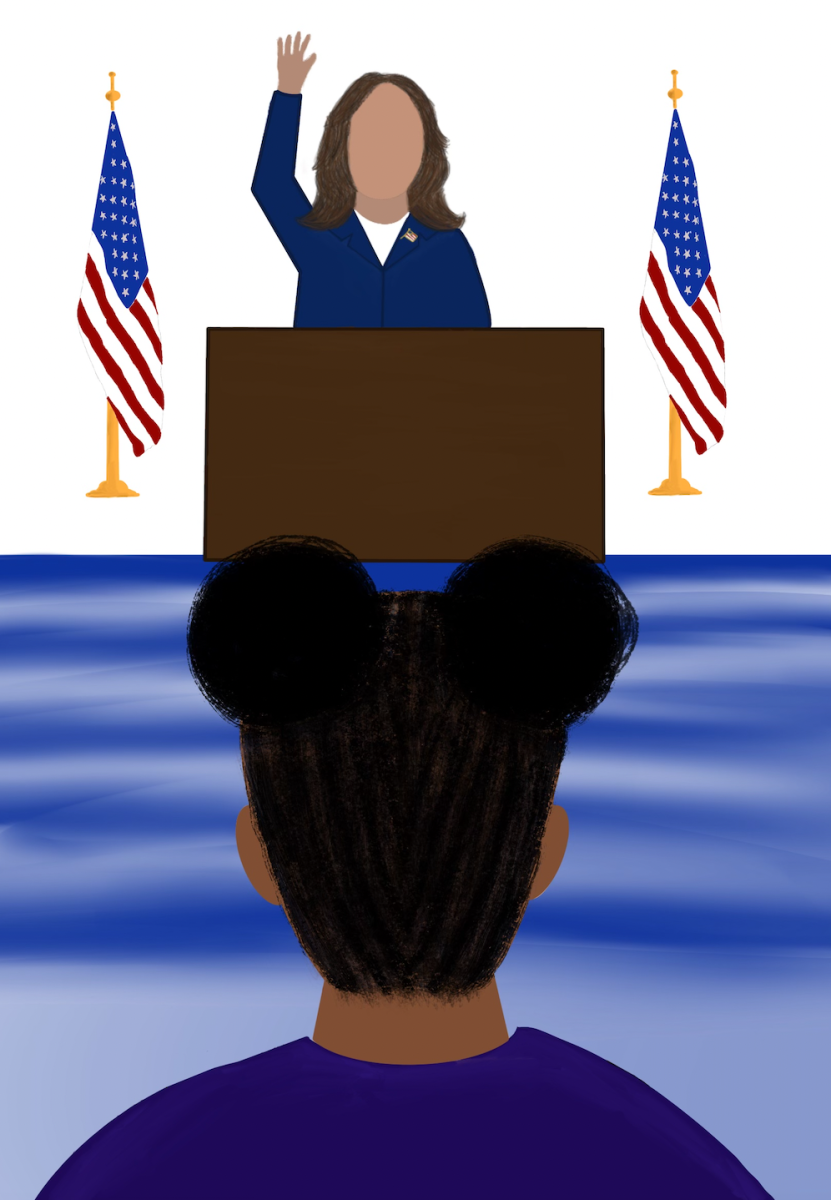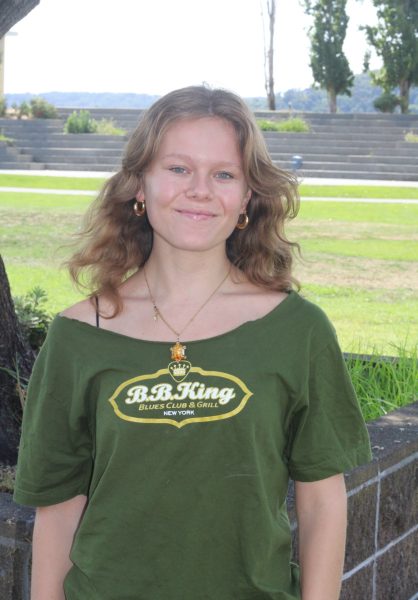The crunch of red and orange leaves on an elementary school walk home, the dull patter of rain against sidewalks, the warm glow of jack o’lanterns and brightly colored plastic decorations, all silhouetted against the slow and haunting music of a time long past. Beneath these scenes and the simple childhood joys they portray, however, lies a more powerful emotion: nostalgia. Nostalgia — one of the most unique emotions humans experience — blurs the lines between wistfulness and wonder, between loss and longing.
The interest in nostalgia has become an increasingly popular point of conversation among social media users. One TikTok user, commenting on a post depicting “winter break in the early 2000s” that received 6.6 million likes, observed: “Just to think: we know the feeling and won’t forget it, but we can’t get it back.” At Redwood, 76 percent of students report having experienced nostalgia, according to an October Bark survey. The ambiguous and conflicting nature of nostalgia makes the raw emotion particularly powerful, as Jessie Curtner, a psychotherapist at a Bay Area coaching practice, Thought Partners, explained her understanding of nostalgia and its role in our lives.
“Nostalgia is a paradoxical set of emotions that encompasses both loss and joy. The reason we are nostalgic is because [we lost] something joyful, something that we loved. We feel both [of these emotions] when we think about it,” Curtner said.
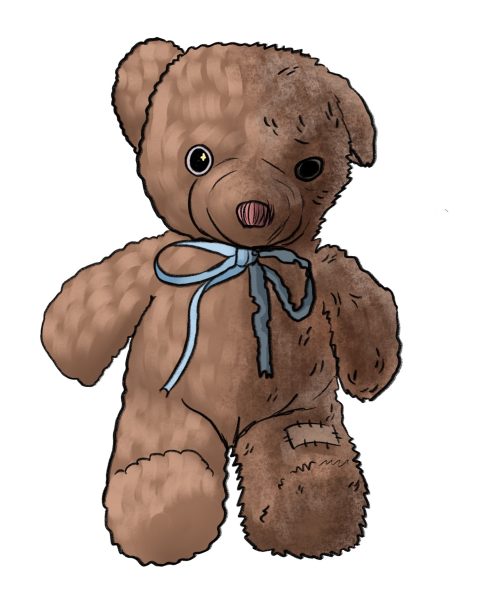
History:
Nostalgia, when it was first defined in 1688 by Swiss physician Johannes Hoster, was initially thought to be a psychological disorder; those afflicted with the condition were described as “manic with longing,” according to the Atlantic. Today, nostalgia is more widely recognized as a common experience and can provide a source of social connection, as exemplified through the popularity of posts on social media depicting images reminiscent of childhood.
The collective expression of nostalgia, however, is not just a modern phenomenon. Poetry teacher Kendall DeAndreis connects the shared experience of nostalgia on social media to the 19th century artistic and literary movement of Romanticism. Romantics embraced a more emotional connection with the world, valuing connections with the past and the inner child.
“The Romantics wanted to highlight the childhood innocence and awe of the world that we lose as we age. We can lose joy and happiness and simplicity [as we grow up],” DeAndreis said. “In that sense, nostalgia is positive. We can think back to times when we were curious about the world.”
Individual experiences:
While nostalgia can be a form of creative expression, it can also be deeply personal. To junior Sophia Rubel, the color teal is especially important in her memories of childhood.
“The color teal brings me back to a time of nostalgia and comfort. When I was younger I was obsessed with teal — my walls were teal, my backpack was teal. I can connect with my inner child a lot when I see [the color teal], to something nostalgic about my past,” Rubel said.
For Rubel, childhood memories surrounding the holidays can also remind her of the past and simpler times in her life.
“I had a lot of fun trick or treating when I was younger… I just remember kids sprinting around the street trying to get as much candy as they could. I get a bittersweet feeling — I’m growing up and that’s great, but also [I’ve lost] those traditions of trick or treating [that brought] me so much joy,” Rubel said.
The negative impacts of nostalgia:
Although nostalgia provokes warm feelings of the past, it can also present challenges and skew our perceptions of memories. Psychology teacher Jonathan Hirsch spoke about the addictive nature of nostalgia and its impact on how we view ourselves
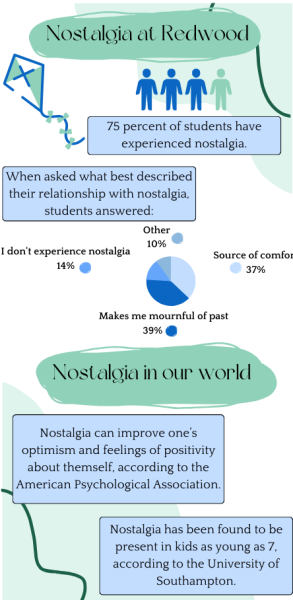
“We unconsciously cling onto a time in our life when we felt more control, even if it wasn’t actually the case. We filter out a lot of negative things because we want to believe that the decisions we’ve made have had positive outcomes for us,” Hirsch said.
Nostalgia can hinder our ability to clearly understand our lives when the past is used as a point of comparison for the present, as DeAndreis pointed out.
“If I become too nostalgic, I tend to think, ‘Oh, my life is worse now than it was,’ and then I tend to dwell on [the thought that] ‘I’ll never be happy again,’” DeAndreis said.
Similarly, the more time we spend thinking about a particular experience, the more we can alter the memories themselves. Hirsch discussed how our memories can present a whitewashed version of the past.
“Our memories are constantly evolving because every time we use [our] neurons, they’re capable of adapting. Our memories are of our last memory. So memories can actually change the more we ruminate on them,” Hirsch said.
Anticipatory nostalgia:
Nostalgia, however, isn’t solely related to past memories. The phenomenon of anticipatory nostalgia — a feeling of nostalgia and loss for a moment that hasn’t even passed yet — is a common one. Anticipatory nostalgia can remove one from the present, affecting existing emotions; according to a study by Le Moyne College, anticipatory nostalgia can lead to a loss of presence and joy in the current moment, as the fear of an experience ending can overtake the experience itself. Curtner spoke to how anticipatory nostalgia can serve as a corrosive force in our perception of the world.
“You can’t even enjoy the moment because you’re imagining the loss in it,” Curtner said.
Junior Madi Rand discussed her own experience with anticipatory nostalgia while rehearsing with the Redwood drama production of “Rocky Horror Picture Show.”
“[The ‘Rocky’ cast] is such a good group of people. But we’re also so different from each other, and a part of me knows it’s just going to end,” Rand said. “It hasn’t even ended yet and I’m thinking, ‘It’s sad to me already.’”
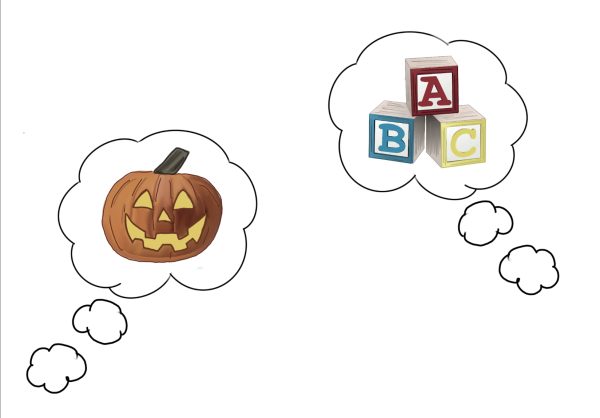
Navigating nostalgia:
Nostalgia cannot be defined as simply good or bad; it is in that paradox that nostalgia is so crucial to our lives today. When nostalgia can provoke feelings of sadness or thoughts that the past is better than the present, the reality of our current situation can escape us. According to an October Bark survey, 40 percent of students say that nostalgia makes them mournful of the past or their childhood. But it is important to remember that the sadness nostalgia can evoke is natural. For Curtner, grieving for the past is an important part of a healthy relationship with nostalgia.
“I think we have to grieve for different parts of our lives,” Curtner said. “Being able to be in touch with the sadness, and allowing yourself to be sad, can help you move through it.”
It is in finding an individual relationship with nostalgia — and with the past — that the full power of nostalgia can be realized, as Hirsch described.
“I am a driver in my life. I’m not just a passenger; things are [not] just happening to me. That kind of mindset helps to protect [me] against the negative side of nostalgia, of getting trapped in the past,” Hirsch said.
Nostalgia can provide us with a multi-faceted understanding of our own lives, our own memories and our identities. Even as we dwell too long in it, even as we reach for it in moments when we shouldn’t, there is a special force of memory and humanity that nostalgia creates.
“I feel like we’d be very different people if we weren’t given that [ability to experience nostalgia]… At a certain point, you [forget the past]. You can think, ‘I don’t remember who I was. This object has no purpose or connection to me,’” Rand said. “But then the nostalgia is like, ‘Oh, actually, that was my favorite toy as a kid.’ It’s very powerful.”


